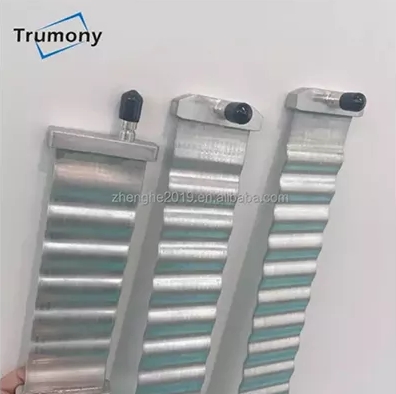Technological Upgrades
Continuous Optimization of Liquid Cooling Technology:
Liquid cooling technology currently has obvious advantages in medium – and high – power scenarios. In the future, it will continue to develop in the direction of improving heat exchange efficiency, reducing costs, and enhancing reliability. For example, further optimize the flow channel design, adopt advanced computational fluid dynamics (CFD) simulation technology and structural topology optimization methods to find the best flow channel geometry, improve heat conduction performance and reduce fluid resistance. – Breakthrough and Innovation in Direct Cooling Technology:
Direct cooling technology cools the battery through the cyclic process of compressing refrigerant gas by a compressor, etc. It has unique advantages in temperature uniformity, but currently faces problems such as difficult uniform temperature design of the battery evaporator. With the development of technology in the future, it is expected to make breakthroughs in solving these technical problems, especially in dealing with the challenges brought by high – power fast – charging technology. If progress can be made, its application may be more extensive.
Integration of More New Technologies:
Technologies such as phase – change materials and heat pipes will be combined with traditional cooling methods to develop composite cooling systems. For example, combining the high heat dissipation efficiency of liquid cooling and the heat storage capacity of phase – change materials can achieve a more efficient and stable cooling effect.
System Design
Integration: The battery cooling system will tend to be more highly integrated with the battery pack, vehicle – level thermal management system, etc. For example, the integration of the liquid cooling system with the battery pack can reduce the system volume and weight, improve space utilization, and make the entire system more compact and efficient.
Intelligence: With the help of sensors, big data, and artificial intelligence technologies, intelligent control of the cooling system can be achieved. It can dynamically adjust the cooling strategy according to various factors such as the real – time temperature of the battery, charge – discharge state, and ambient temperature, accurately control the cooling intensity, improve energy efficiency and reliability, and also realize fault diagnosis and early warning.
Material Application
Environmental Protection: To reduce the environmental impact, the cooling system will increasingly use environmentally friendly materials and recyclable materials. For example, in the liquid cooling system, more environmentally friendly coolants will be used to reduce environmental pollution.
High – Performance: Develop and apply new materials with higher thermal conductivity, better corrosion resistance, and mechanical strength to improve the performance and lifespan of the cooling system. For example, new high – thermal – conductivity materials used in liquid – cooled plates can more effectively conduct and dissipate heat.
Market Expansion
Increase in Liquid Cooling Penetration Rate: In fields such as energy storage and new energy vehicles, with the continuous increase in energy density and charge – discharge rates, the penetration rate of liquid cooling technology will gradually increase and become one of the mainstream cooling solutions. It is expected that the penetration rate of energy storage liquid cooling technology will reach about 45% in 2025.
Diversification of Application Scenarios: Battery cooling technology will be extended to more application fields. In addition to the existing fields such as electric vehicles, energy storage power stations, and consumer electronics, it will also be more widely applied in aerospace, ships, distributed energy, and other fields.

